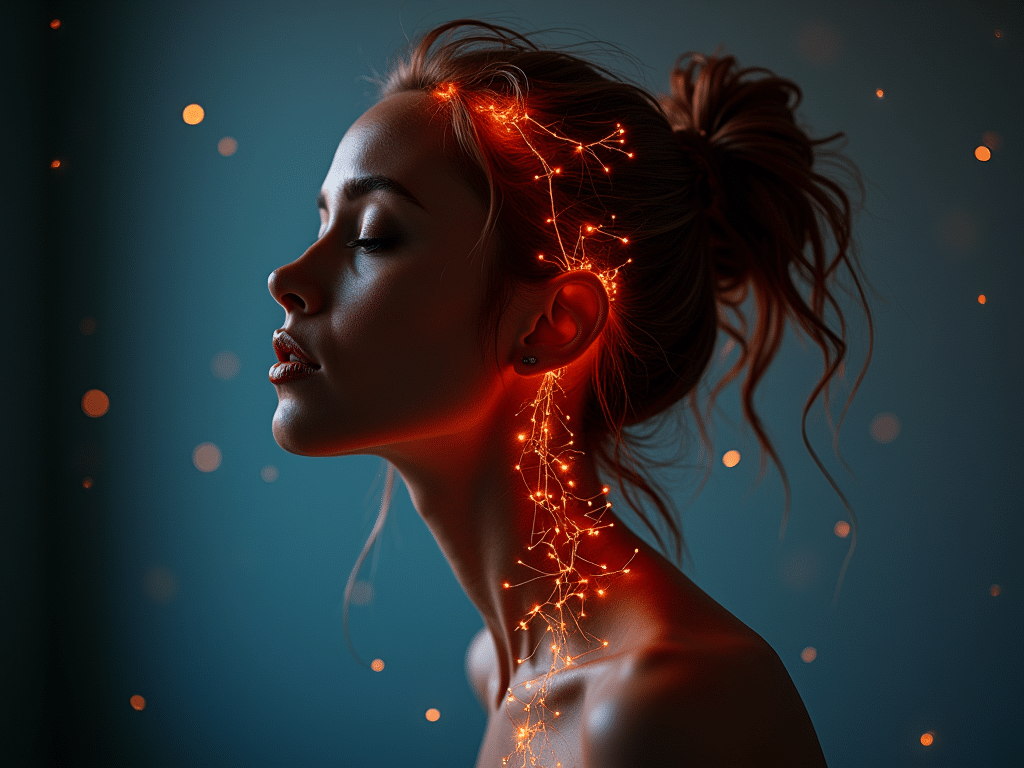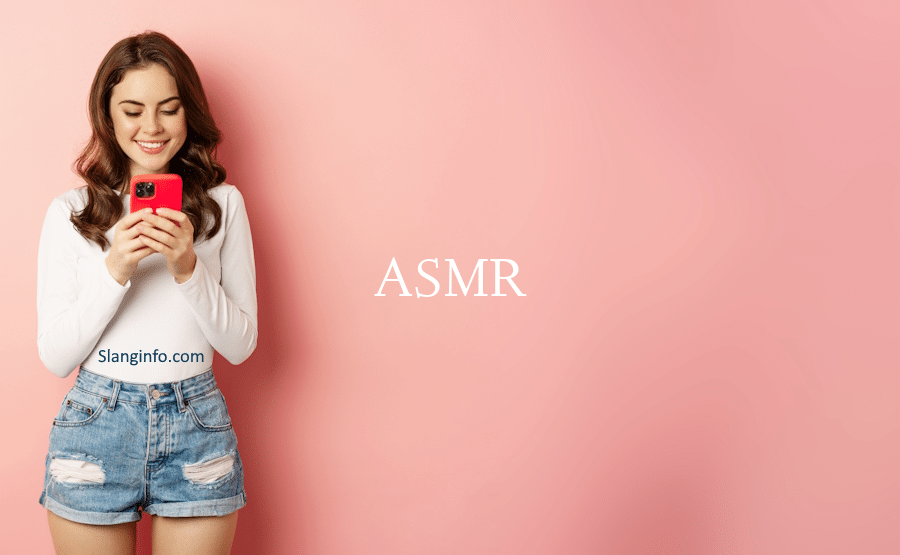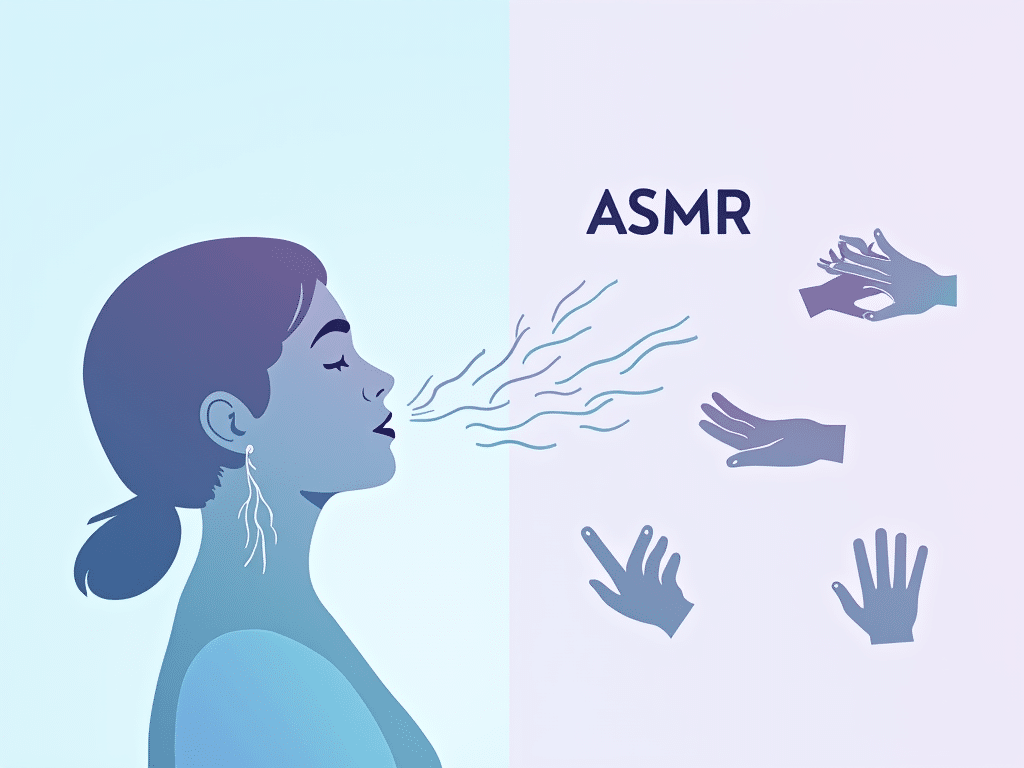Hey there, curious cats! 🐱 Have you ever stumbled upon a video of someone whispering into a microphone or tapping their nails on a surface and felt a strange, tingly sensation in your head? Congrats, you’ve just experienced ASMR! But what exactly is this phenomenon that’s got millions of people hooked? Let’s dive in and explore the fascinating world of ASMR together! 🧐
| Key Takeaways | Meaning |
|---|---|
| ASMR Definition | Autonomous Sensory Meridian Response |
| Triggers | Whispering, tapping, personal attention, and more |
| Effects | Relaxation, tingling sensation, improved mood |
| Popularity | Millions of views on YouTube and social media |

🤫 What is ASMR?
ASMR, short for Autonomous Sensory Meridian Response, is a fancy term for that delightful, tingly feeling some people experience when exposed to certain sounds or visuals. It’s often described as a pleasant, relaxing sensation that starts at the crown of the head and travels down the spine. 🌈
Think of it like a brain massage – without anyone actually touching you! Pretty cool, right? 😎
🎥 The Origins of ASMR
Believe it or not, people have been experiencing ASMR for ages, but it wasn’t until the internet era that it got a name and gained widespread attention. The term “ASMR” was coined in 2010 by Jennifer Allen, a cybersecurity expert who wanted to create a community for people who experienced this unique sensation.
Fast forward to today, and ASMR has exploded in popularity, with millions of videos on YouTube and a thriving community of ASMRtists (creators of ASMR content) and enthusiasts. 📈
🎧 Common ASMR Triggers
So, what exactly causes that delightful ASMR tingle? Here are some of the most common triggers:
- Whispering: Soft, gentle whispers are a classic ASMR trigger. There’s just something about the intimacy of a whisper that can send shivers down your spine! 🗣️💨
- Tapping and Scratching: Light tapping or scratching on surfaces like wood, plastic, or even the microphone itself can create a soothing, rhythmic sound. 🎶
- Personal Attention: Many ASMR videos involve roleplay scenarios where the ASMRtist gives you personal attention, like a haircut or a doctor’s appointment. It’s like having a virtual spa day! 💆♀️
- Crinkling and Crackling: The sound of crinkling paper, plastic, or foil can be incredibly satisfying for ASMR enthusiasts. 🍬
- Gentle Movements: Watching someone perform a task with slow, deliberate movements, like folding towels or painting, can be incredibly relaxing. 🎨
Of course, everyone’s ASMR triggers are different. What gives you the tingles might leave someone else totally unaffected. It’s all about finding what works for you! 🔍
🌟 ASMR in Popular Culture

ASMR has come a long way from its humble online beginnings. These days, you can find ASMR references everywhere from memes to mainstream media. 📺
Some notable ASMR moments in pop culture include:
- Michelob Ultra’s Super Bowl Ad: In 2019, Michelob Ultra featured Zoë Kravitz whispering into a microphone and tapping on a bottle in their Super Bowl commercial. Talk about a big stage for ASMR! 🏈🍺
- W Magazine’s Celebrity ASMR Interviews: W Magazine has a popular series where celebrities like Salma Hayek and Jake Gyllenhaal try their hand at ASMR. Seeing your favorite stars whisper and tap is a whole new level of entertainment! 🎥🤩
- ASMR in Music: Some artists, like Billie Eilish, have incorporated ASMR elements into their music videos and live performances. Who knew whispering could be so musical? 🎤🎶
It’s clear that ASMR has captured the attention of mainstream culture – and it shows no signs of slowing down! 🚀
Continuing from where we left off, let’s dive deeper into the world of ASMR and explore its impact on popular culture and science.
🧠 The Science Behind ASMR
Now, you might be wondering, “Is there any actual science behind this tingly sensation?” Great question! While research on ASMR is still in its early stages, scientists are starting to uncover some fascinating insights:
- Brain Activity: Studies using fMRI scans have shown that ASMR activates areas of the brain associated with reward and emotional arousal. It’s like your brain is getting a little party! 🎉
- Relaxation Response: ASMR has been found to lower heart rate and increase feelings of social connection and relaxation. It’s like a chill pill, but without the pill! 💊
- Personality Traits: Some research suggests that people who experience ASMR might be more open to new experiences and have higher levels of neuroticism. But don’t worry, that doesn’t mean you’re neurotic if you enjoy ASMR!
While we’re still learning about the science of ASMR, many people swear by its benefits for relaxation, sleep, and stress relief. It’s like a super chill superpower! 💪
🧘♀️ ASMR vs. Other Relaxation Techniques
ASMR isn’t the only relaxation game in town. Let’s see how it stacks up against some other popular techniques:
| Technique | How It Works | Unique Aspect |
|---|---|---|
| ASMR | Triggers tingling sensation through specific sounds/visuals | Provides both physical and mental relaxation |
| Meditation | Focuses mind on breath or mantra | Cultivates mindfulness and awareness |
| Yoga | Combines physical postures with breath control | Improves flexibility and strength along with relaxation |
| Guided Imagery | Uses imagination to create calming mental scenes | Can be tailored to personal preferences |
ASMR stands out because it offers a unique sensory experience that can be both relaxing and entertaining. It’s like the cool, quirky cousin in the relaxation family! 😎
🤔 Controversies and Misconceptions
Like any popular trend, ASMR has its fair share of controversies and misconceptions. Let’s clear up a few:
- “ASMR is sexual”: While some people find ASMR relaxing in a sensual way, it’s not inherently sexual. Most ASMR content is totally PG!
- “ASMR is just a placebo effect”: While the placebo effect might play a role, brain imaging studies suggest that ASMR has real, measurable effects on the body and mind.
- “Only weird people like ASMR”: Nope! ASMR is enjoyed by millions of people from all walks of life. It’s about as weird as liking music or art – which is to say, not weird at all!
Remember, it’s okay if ASMR isn’t your cup of tea. Just like some people love spicy food and others can’t stand it, ASMR is a personal preference. No judgment here! 🤗
🌟 How to Experience ASMR
Ready to give ASMR a try? Here are some tips to get you started:
- Explore Different Triggers: Try out various ASMR videos to find what works for you. You might be surprised by what gives you tingles!
- Create a Relaxing Environment: Find a quiet, comfortable space where you won’t be disturbed.
- Use Headphones: Good quality headphones can enhance the ASMR experience by picking up subtle sounds.
- Be Patient: Not everyone experiences ASMR tingles right away. Give it time and keep an open mind.
- Experiment with Live ASMR: Some people find in-person ASMR experiences, like getting a haircut or a massage, more effective than videos.
Remember, ASMR is all about relaxation and enjoyment. There’s no right or wrong way to experience it!
🌍 ASMR Around the World
ASMR might have started in the English-speaking internet, but it’s now a global phenomenon. Different cultures have put their own spin on ASMR:
- Japan: “Whisper Cafes” where patrons can experience live ASMR performances.
- South Korea: “Mukbang” videos, where hosts eat large quantities of food, often incorporate ASMR elements.
- Russia: ASMR role-plays often feature historical or literary themes.
It’s fascinating to see how ASMR adapts to different cultural contexts. It’s like a worldwide tingle party! 🌎🎉
As we wrap up our ASMR journey, remember that whether you’re a die-hard ASMR fan or a curious newcomer, there’s a whole world of relaxation and sensory experiences waiting for you to explore. So go ahead, put on those headphones, and let the tingles begin! Who knows? You might just find your new favorite way to chill out. Stay lit, stay relaxed, and keep those good vibes flowing! ✌️😊







